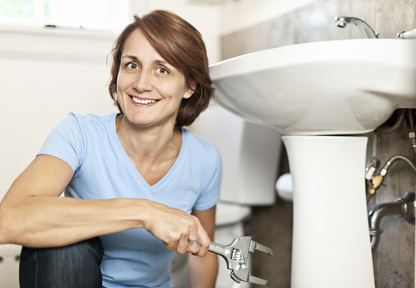Almost everyone maintains his or her own way of thinking about How to Fix a Water Damage Bathroom.

The bathroom is exceptionally susceptible for moist buildup and also prospective water damage as a result of the constant use of water in it. This article supplies easy inspection strategies to assist detecting water damage hazards.
The constant use of water in the bathroom makes it exceptionally prone for moist buildup as well as potential water damages. By examining it routinely, you can reduce water associated damages.
The adhering to set of examinations is simple to perform and also ought to be done as soon as in every three months in order to maintain your bathroom healthy and to stop potential water problems caused by the bath tub, the shower, pipe joints and also plumbing, sinks, cabinets, as well as the toilet
Do not disregard executing these evaluations and also be comprehensive while executing them. Keep in mind that these basic inspections can conserve you a great deal of money by supplying early indicators for water damages
Sinks as well as Cabinets
Sinks and also cabinets are subjected to moisture as well as moisture daily as well as are usually overlooked. Check regularly under the sink and on the counter top over it. Repair any drip in the catch as it might suggest drain issues. Check out the sink, slow draining pipes might show a blocked drain. Replace sink seals if they are broken or loosened.
Bathtub and also Shower
The shower as well as bath tub require special focus and maintenance. Examine the tiles as well as change if cracked. Ensure that there is no missing out on grout between the floor tiles. Inspect and change broken caulking at joints where the walls fulfill the flooring or the bathtub. Blocked drains pipes and also pipes issues will certainly protect against the bathtub from drying as well as might show serious issues underneath the bath tub. Consult with a professional instantly to avoid architectural damages. Pay attention to discolorations or soft locations around the bathtub walls as they may suggest an interior leakage.
Plumbing
Signs for water damages are tough to detect because many pipes are set up inside the walls.
Pay special interest to flooring as well as wall surfaces wetness and also discolorations as they might show an unseen plumbing problem. Check dampness degrees in adjacent areas too.
The Commode
The commode is a prone water joint. Examine the water lines as well as look for leakages around the bathroom seat, in the pipe, as well as under the water storage tank. If you find any type of indications of wetness on the floor around the toilet, check for leaks in the toilet edge and also container seals.
Understand that hanging toilet bowl antiperspirants boosts the chances for obstructions.
TIPS TO PREVENT WATER DAMAGE IN THE BATHROOM
The average household uses approximately 80-100 gallons of water per person per day. For a family of 4, that's almost 2,500 gallons of water a week! The largest portion of this consumption comes from bathroom use. Flushing the toilet uses the most water, followed by taking a shower or bath. With that much water running through the home, water damage in the bathroom is bound to happen. Knowing how to spot signs of a water leak is essential to preventing long-term damage. This guide provides you with tips to reduce the impact of water damage on your bathroom.
CAUSES OF BATHROOM WATER DAMAGE
Pipe breaks are the most common cause of water damage we see in our daily jobs. The age of a pipe plays a large role in a pipe break as well as corrosion. Over time, the metal begins to break down, allowing water to escape. Frozen pipe breaks are also a concern in the winter months. Toilet overflows caused by paper products or children flushing inappropriate items. Degraded caulking around the toilet or bathtub can allow water seepage, sometimes behind the fixture, into the subfloor or walls. Condensation forms when the water in a pipe is cooler than the air temperature. Beads of water form on the exterior of the pipes, sometimes so much so that the water begins to drip and pool below. Sink or shower backups created by poor drainage. HOW TO PREVENT WATER DAMAGE IN YOUR BATHROOM
Inspect your toilet supply line for worn or frayed hoses and replace them as needed. Winterize your plumbing to prevent a frozen pipe break. Use vent fans to prevent condensation that can lead to mold growth. Routinely check and replace degraded caulking around your toilet or bathtub. Increase the temperature in your toilet tank and insulate your pipes during the warm summer months to keep condensation from forming. Use child safety locks on the toilets. Flush only toilet paper. "Flushable" wet wipes are actually not good for your plumbing system. Additionally, feminine hygiene products should not be flushed. Prevent water from escaping the tub or shower. Make sure shower curtains are in good condition. Inspect shower doors and replace the seal strip if necessary. Wipe up any water that accumulates on the floor and use bath mats. Water left to sit can cause damage to the tiles and flooring. Refrain from using bath products containing heavy oils to avoid a clogged drain.

I hope you liked our excerpt about How to Prevent Bathroom Water Damage. Thank you so much for taking the time to read our post. Do you know anybody else who is fascinated by the niche? Do not hesitate to promote it. Thanks a bunch for your time. Kindly visit our website back soon.
Request Appointment